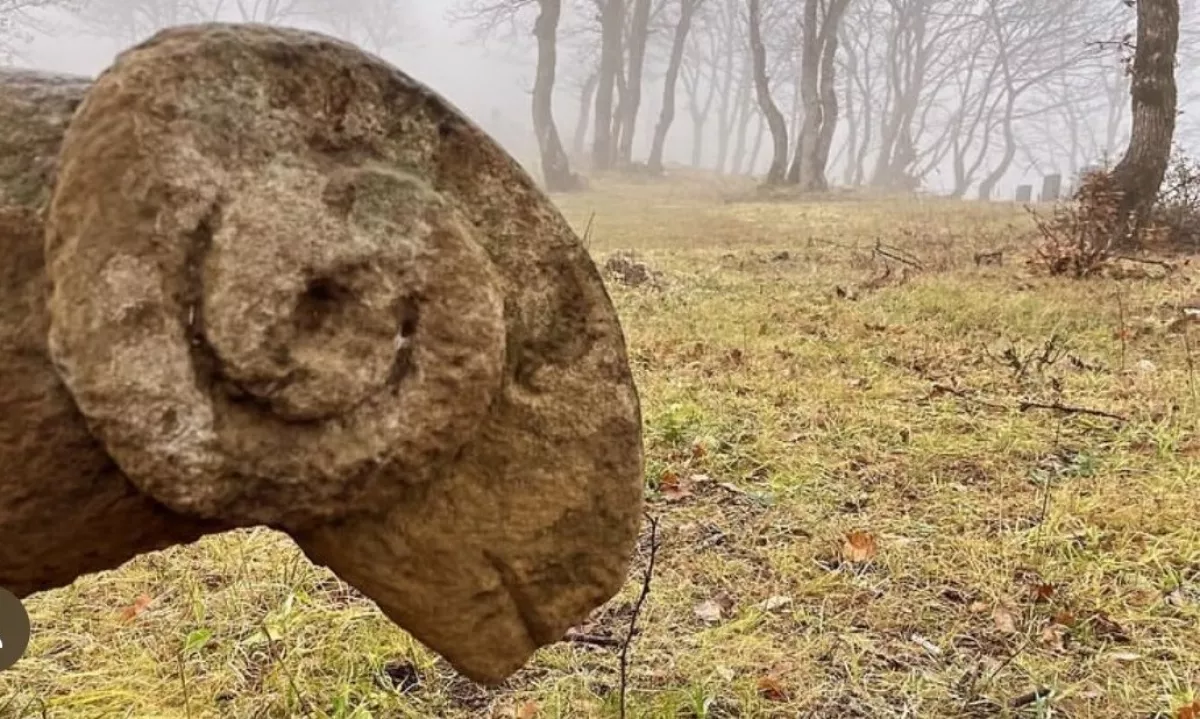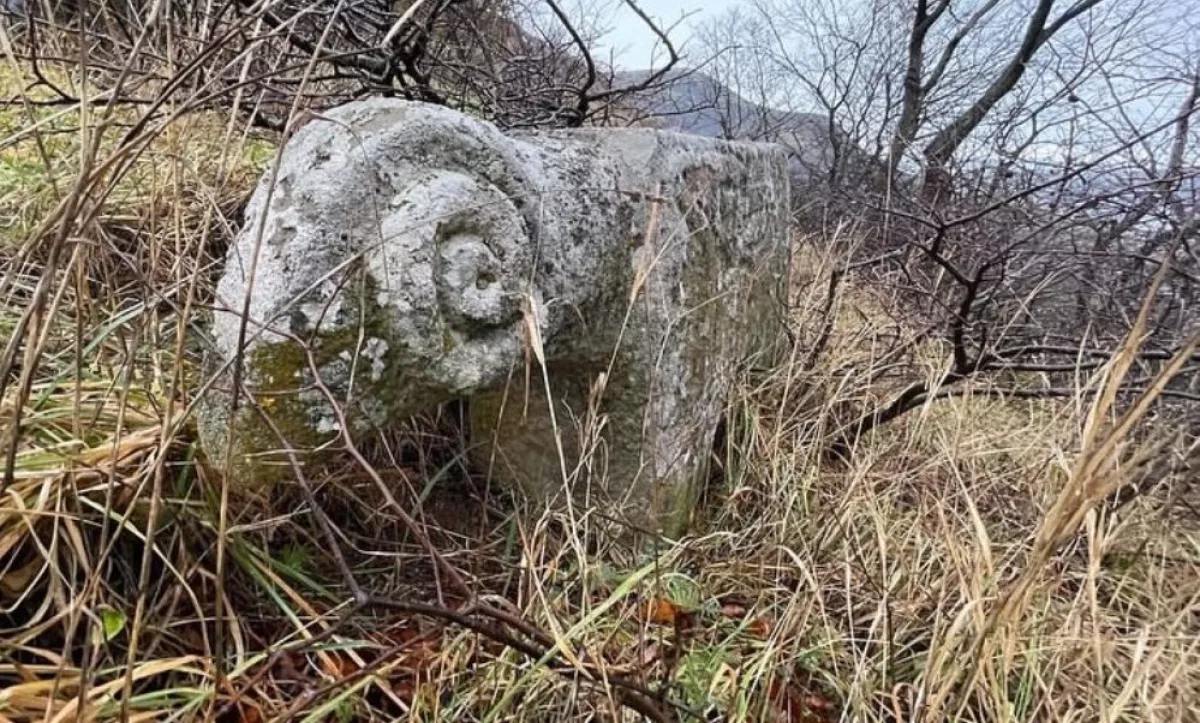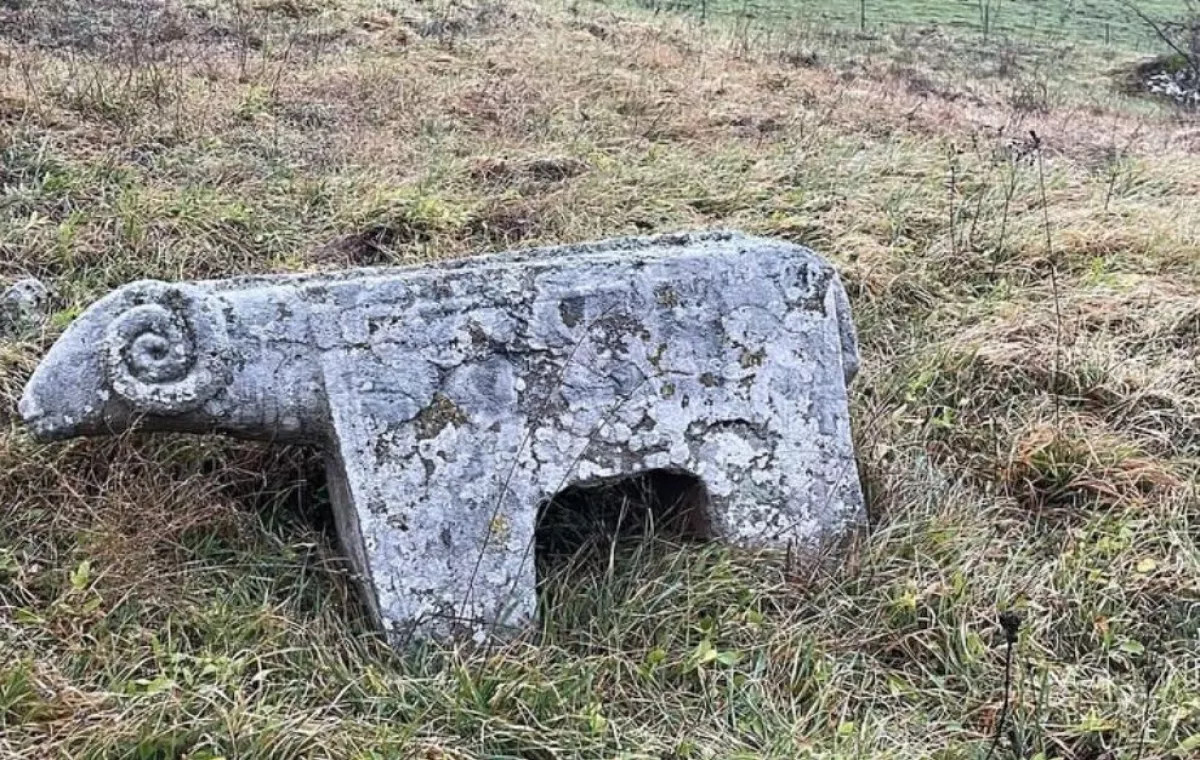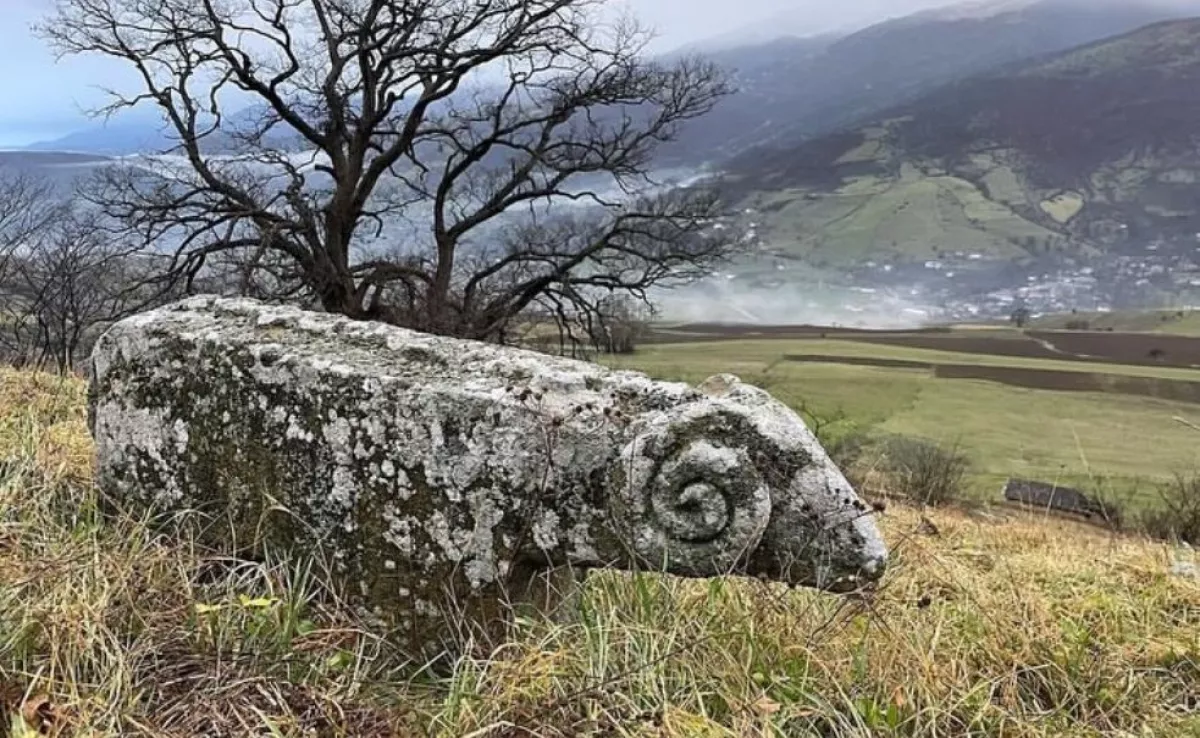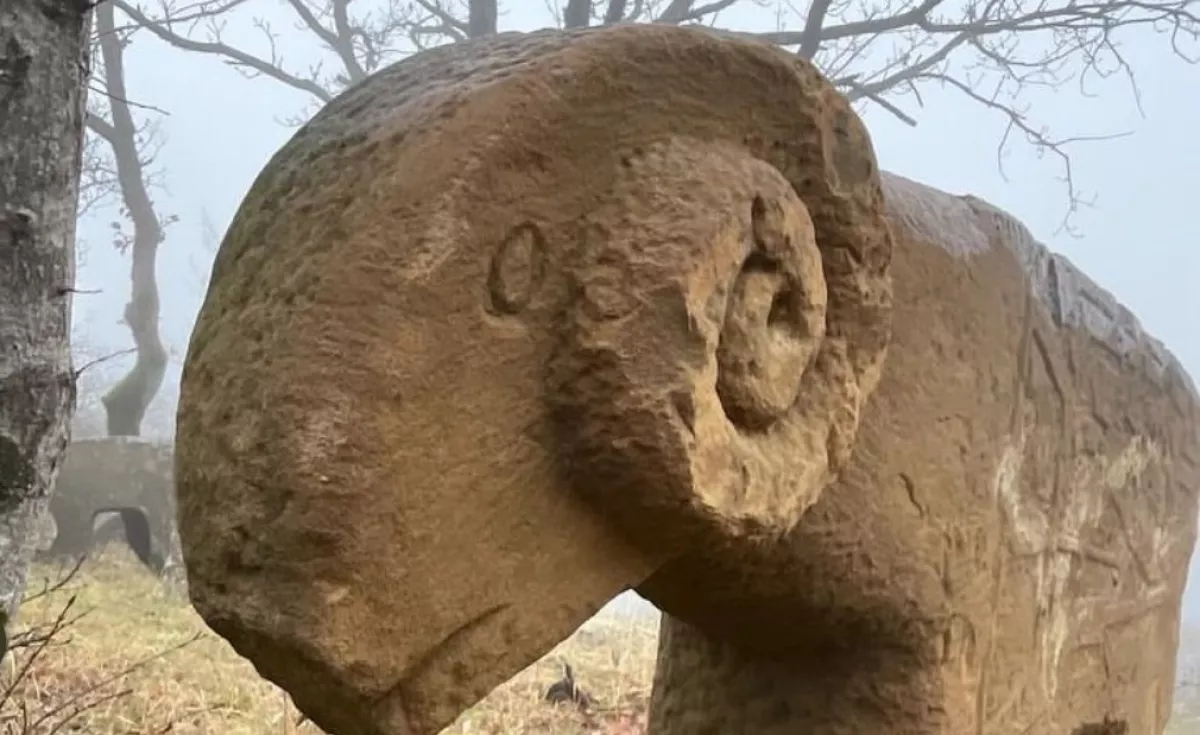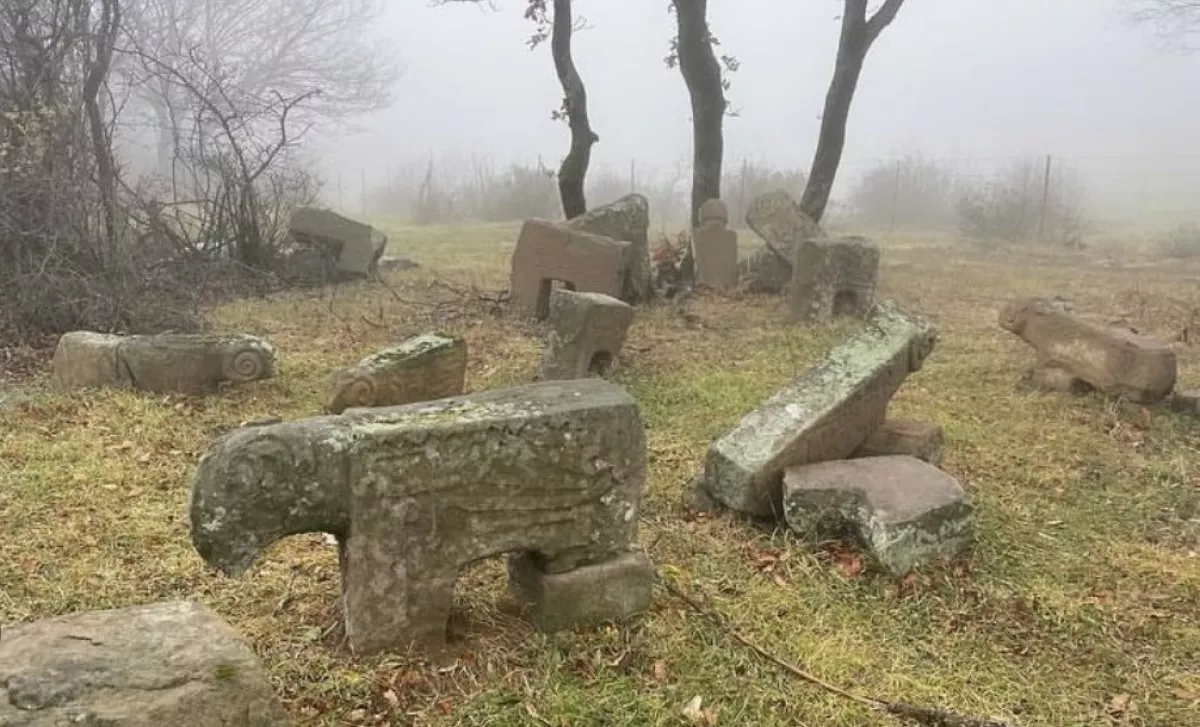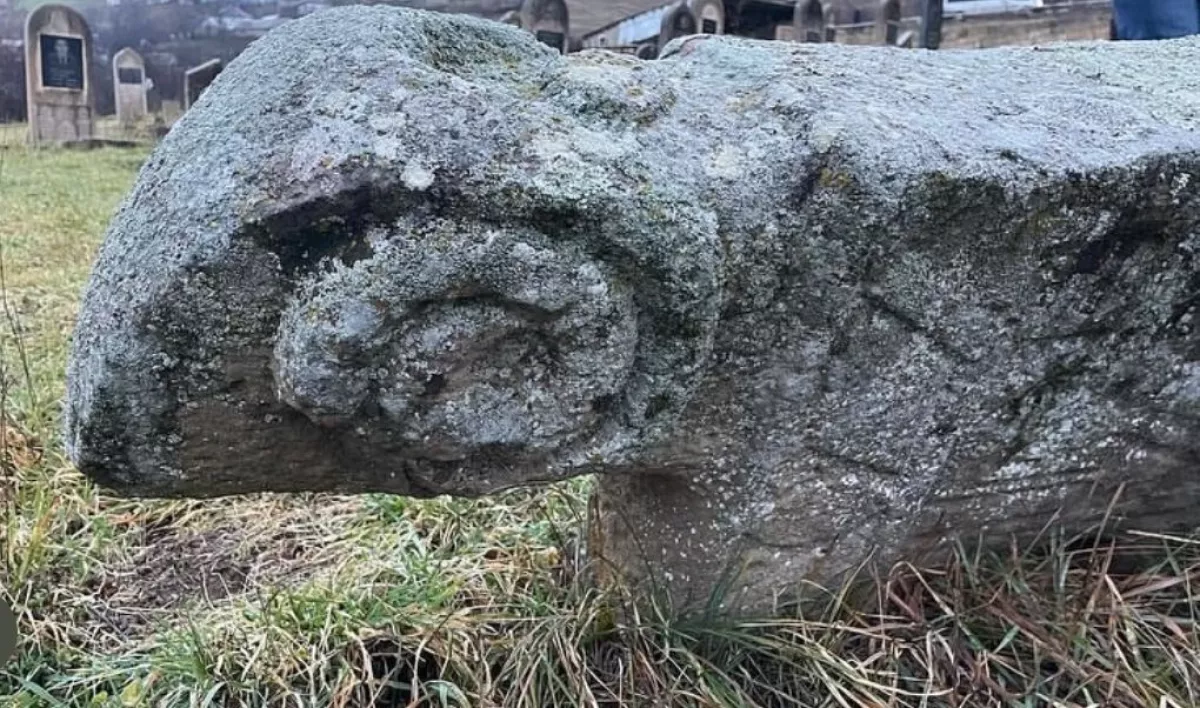"Qoç Daş": Echoes of ancient Turkic heritage A historical insight on Caliber.Az
"Any ancient stone bearing a historical date, inscription, or image is the petrified heart of a once-living creator, a builder who, through the fire and flames of history, preserved our beautiful land, our history, and for centuries laid the majestic and magnificent foundation for the development of science, culture, and art." – Samad Vurgun, famous Azerbaijani poet.
The Turkic culture, to which our people belong, is rich and multifaceted. Its customs, rituals, cultural values, architecture, and the memory of the great sons and daughters of the Turkic world, passed down through generations, continue to inspire awe with their splendour and grandeur. A special place in this culture is occupied by zoomorphic images and sculptures.
Totemic beliefs were widespread among the ancient Turkic peoples, as evidenced by numerous ethnographic materials. Zoomorphic symbols were depicted on everyday and ritual objects such as belts, jewellery, ceramics, talismans, weapons, and tombstones. Among the most common representations are images of birds, ibexes, rams, deer, horses, bulls, snakes, wolves, dogs, and feline predators. It is important to note that the mere depiction of a particular animal may indicate its connection to totemism. Consequently, some animals featured on various historical monuments are presumed to have been totems of ancient peoples. Particularly intriguing are the zoomorphic symbols whose totemic nature finds confirmation in Azerbaijani mythology.
Ritual zoomorphic sculptures of rams and horses are very important elements of the great Turkic unity, scattered by the hundreds and thousands across countries such as Azerbaijan, Kyrgyzstan, Iran (cities: Ardabil, Tabriz), Kazakhstan, Türkiye (cities: Artvin, Kars, Tunceli, Van, Erzurum, Erzincan, Bitlis, Ağrı, Erciş, Malatya, Tercan, Sivas, Rize, Trabzon, Akşehir, and Afyon), Russia (regions: Altai, Khakassia), as well as almost all settlements and cities of Western Azerbaijan, i.e., present-day Armenia, whose Turkic population was expelled through ethnic cleansing, and a large number of historical monuments were simply destroyed.
Among zoomorphic sculptures, rams hold a special place. In the process of creating the archaeological map of Azerbaijan, archaeologist V. M. Sysoev recorded stone sculptures of horses and rams (bighorns) at the following locations: the Absheron Peninsula, Muslim cemeteries in Karabakh, in Nakhchivan, Shirvan, Lankaran, and Yardimli. All these sculptures are genuine works of art. Most of these figures date from the 13th to 19th centuries. However, there are examples of zoomorphic figures, particularly images of rams, found during archaeological excavations on the territory of Azerbaijan, dating back to the 5th-3rd millennium BC in Jalilabad, at the archaeological site of Khudutapa.
The cult of the ram (bighorn) has existed among the Turkic peoples since ancient times and carried profound meaning. The figures of rams, according to the worldview of the ancient Turks, gave the deceased the chance to return from the afterlife to a new life, to the world of light. In addition, the ram symbolized the inviolability of power. These sculptures are known among the people as "Qoç Daş."
Many beliefs are associated with the ram cult. According to the Oghuz Turks, a person within a flock of rams was not afraid of evil spirits. Black rams were especially revered. The ram was used as a sacrificial animal in shamanic rituals. Images of rams with powerful, twisted horns were reproduced by many generations of potters and stone carvers. The ram served as a kind of amulet. These figures were used to protect against evil forces and to attract good forces and their patronage. On the stone rams, in addition to inscriptions, scenes of hunting were also often carved.
It is also interesting to note that the hero of the eponymous medieval Azerbaijani epic Koroğlu is often referred to in the epic as "Qoç Koroğlu." The ancient Azerbaijani term for strong and courageous people, "qoçu," also originates from the Turkic word "qoç." A stone sculpture of a horned ram above a grave served as a symbol of bravery, strength, and courage. It is also important to note that the widespread presence of ram tomb sculptures in Azerbaijan is associated with the lives of the Oghuz Turks – the tribal unions of the Kara-Koyunlu (black sheep) and Ak-Koyunlu (white sheep), and later the Safavids.
One of the first to report on stone ram figures was the English artist, traveler, writer, and diplomat Robert Porter, who sketched and described a stone ram with inscriptions that he saw at an old cemetery in Julfa. In 1825, the scientist, naturalist, and paleontologist Eduard Eichwald also mentioned a similar sculpture, publishing a sketch of horse and ram figures from the Lori steppe (territory of present-day Armenia) in his book.
Many of the animal sculptures are of considerable size. Some figures are roughly and schematically carved from stone, but occasionally, sculptures with great artistic skill can be found. Often, the sides and backs of the rams, in addition to inscriptions, are covered with relief images. Arabic script can also be found on them.
A striking example of ram imagery can be found in the stone tombstones discovered in the Yardimli region. Scholars date them to the 14th-17th centuries. What sets these figures apart is their delicacy and precision of execution. Upon viewing them, one is astonished by the craftsmanship of ancient stonemasons. The ornaments and detailing are particularly noteworthy. Unlike the rams found in other parts of Azerbaijan, the figures here even depict tails and other small details, albeit schematically, which lend the figures a sense of liveliness and individuality. For example, at one cemetery, rams with elegant ornaments are carved with the precision of jewelry work, while at another, the figures are simpler and more rudely shaped. The animals are depicted in a calm, expectant pose, creating the impression that they are guarding the peace of the deceased.
These figures attract the attention of not only scholars but also tourists, becoming an important part of cultural tourism in Yardimli. Thanks to such discoveries, we can better understand and appreciate the achievements of ancient masters and preserve this heritage for future generations.
Unfortunately, work in this area is not being conducted to its full potential. It is essential to begin a systematic study of these unique monuments. A thorough registration and documentation of all findings should be carried out to preserve them for future generations. Programs need to be developed for the detailed study of the artistic style and symbolism of these figures, which will deepen our understanding of the cultural and artistic development of the region. Such research can have enormous significance not only for Azerbaijan but also for global science, broadening our understanding of ancient Turkic civilizations and their art.
Zoomorphic monuments are a valuable heritage of our country. Emerging in burial rites, these zoomorphic symbols are multifaceted elements of the funerary ritual. The ram figures are not only monuments of the past but also an important source of information for historians, archaeologists, and art historians. They continue to inspire and amaze with their artistic and historical value, playing a vital role in preserving the cultural heritage of the region (based on information from S. Gurbanov).
Vahid Shukurov, exclusively for Caliber.Az




